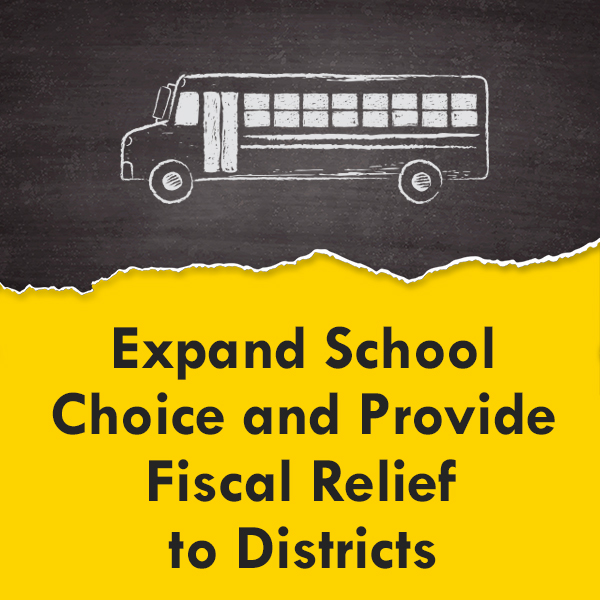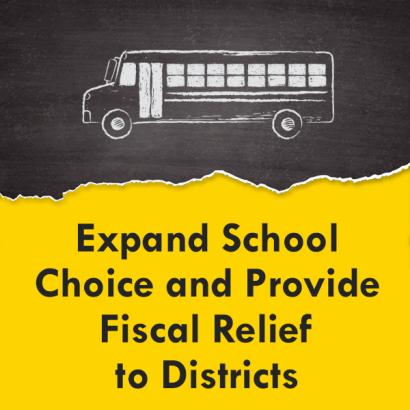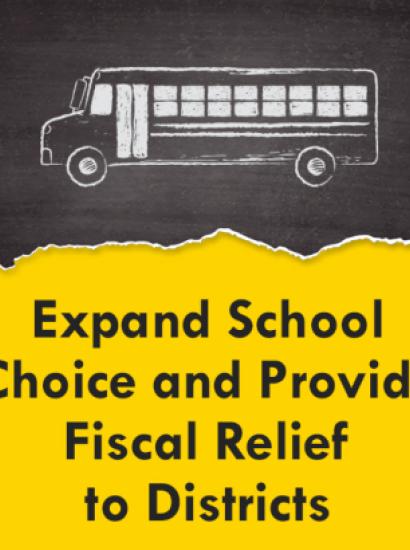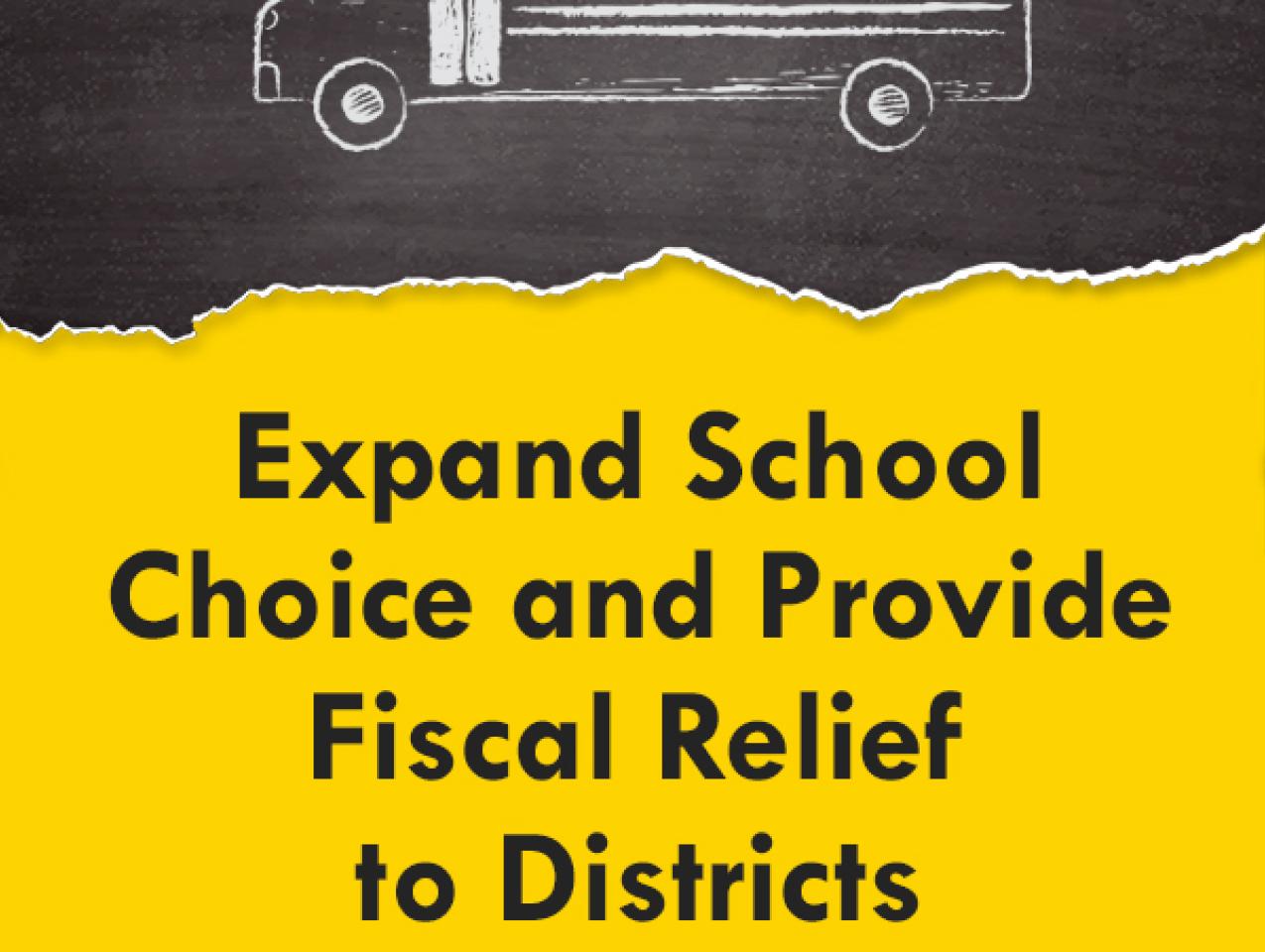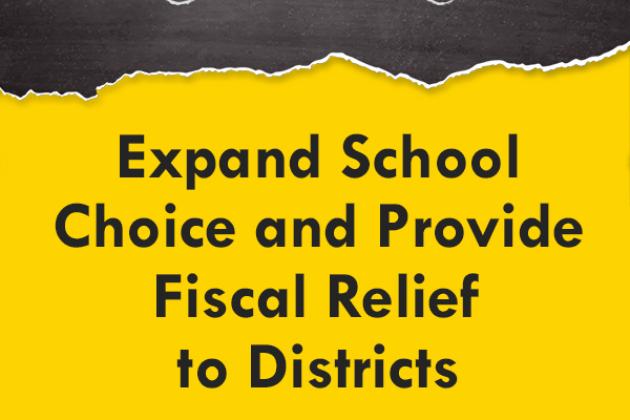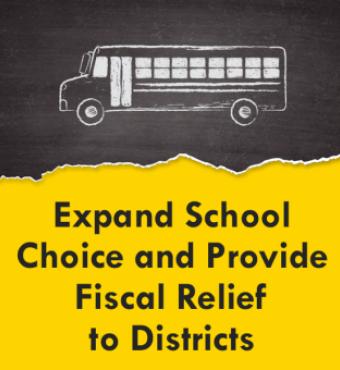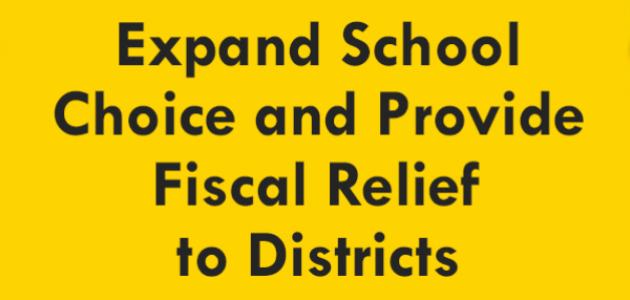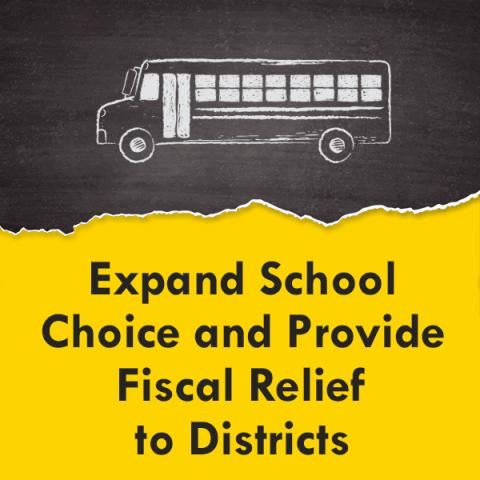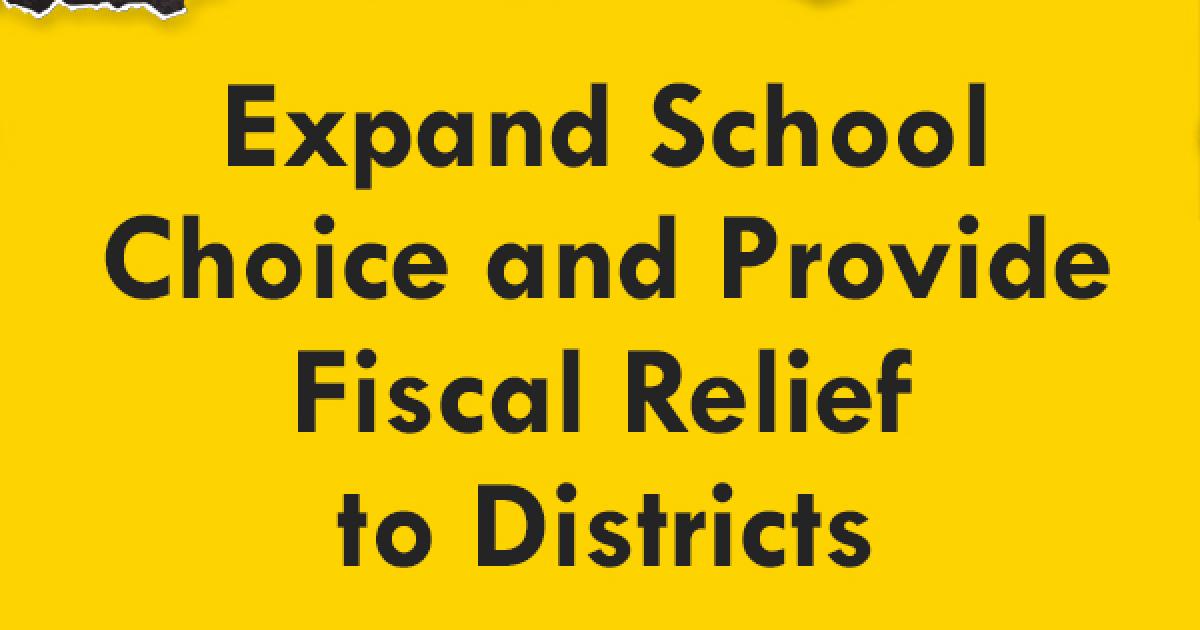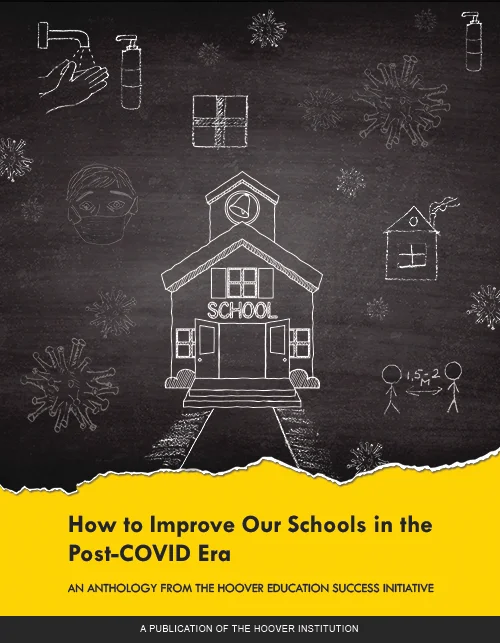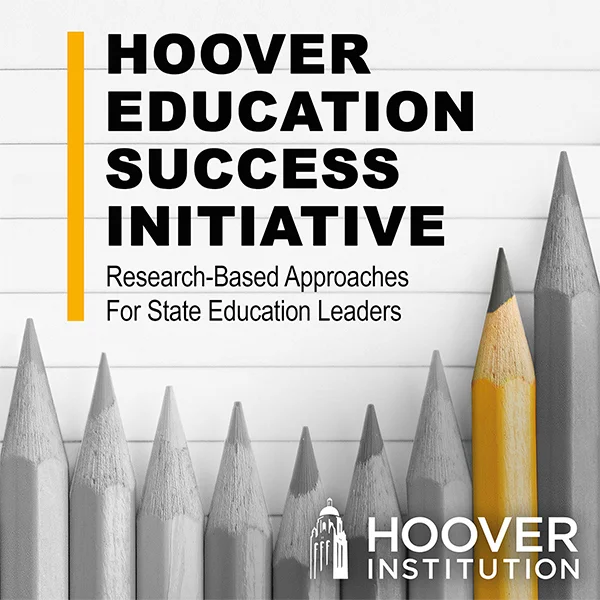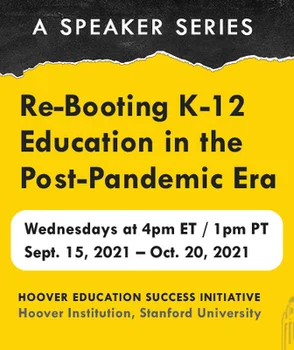- Reforming K-12 Education
Recommendations
To respond to increasing parental demand for choice in the post-pandemic environment, while recognizing concerns of school districts and their employees, states should do the following:
- Lift enrollment limitations on charter schools.
- Authorize additional charter schools when charters are oversubscribed.
- Share underutilized facilities with charter schools.
- Broaden access to voucher and tax-credit scholarship programs by raising current restrictions on numbers, income limits, and tuition support.
- Safeguard districts from serious fiscal risks due to declining enrollments.
The Challenges We Face
In 2020, a generation of students suffered the largest loss of learning the United States has ever experienced.1 Districts closed their schools in mid-March, and only a fourth of all children returned to school for full-time, in-person instruction the following fall. A majority of children are likely to have been learning online throughout the 2020–21 school year. For many districts, a return to normal operations in the fall of 2021 remains uncertain. Online learning has proven to be a totally inadequate substitute. Parental reports,2 achievement studies,3 and model estimations4 all indicate major downward shifts in learning when in-person instruction is not provided.
The learning slide is especially large for the disadvantaged.5 More-educated, higher-income parents are hiring tutors, forming learning pods, and committing more family time to educational purposes. Students from low-income families have less access to these alternatives than those from high-income ones, and they are more likely to be denied access to in-person instruction at school.6 Those in need of special education are especially at risk.7[7]
Meanwhile, most private schools kept their doors wide open for in-person learning. When parents were asked how their children were being educated in November 2020, 60 percent of children in private schools were said by their parents to be learning in person, 22 percent were attending school during part of the school week, and only 17 percent were in a fully remote mode. The numbers were almost exactly the opposite for district-operated schools: 57 percent remote, 19 percent hybrid, and 24 percent in person.[8] With district schools closed, many parents are exploring new educational alternatives. Disconcerted by closed schools, families are fleeing big cities for the suburbs, exurbs, and beyond.9✏1 A hair stylist in Philadelphia is moving with her two children to Saratoga, Florida, where schools are open. Children in North Philadelphia “need a safe haven more than anybody else,” she told a reporter. “They are not being thought about.” She and her husband are hoping to be eligible for a tax-credit scholarship to attend a private school.10[10]
Enrollments in public schools, once expected to rise in fall 2020,11 have fallen by 2 percent, according to early reports.12 That is very likely an undercount. California, New York, Illinois, and other states with large enrollments in urban districts, where attendance problems have been severe, have yet to report their losses. In surveys, parents are reporting that 3 percent of their children have switched to private schools, 3 percent to charter schools, and 2 percent to homeschooling.13 In Pennsylvania, enrollments are down 7 percent in the “state’s most populous counties.”14 Some of these shifts may be temporary, but urban districts are certain to face substantial enrollment declines.
✏2 These changes have serious long-term financial consequences for school districts.15 Enrollment-based state and federal grants fall with each pupil’s departure. Though pandemic relief from the federal government may delay the day of reckoning,16 many districts will soon face major revenue shortfalls, if experiences from the last recession are any guide.17[17]
The looming fiscal crisis has intensified conflicts over school choice. As parents are seeking more options,18 school districts and teacher unions are trying to limit them. It is time to listen to President Joe Biden’s call for unity and consensus, for frank recognition of the justifiable interests at stake for all parties to the conversation.
What We Know
Charters
Charter schools are state-authorized schools that operate under nonprofit management free of many restrictions that encumber district schools. Begun in 1991, charters currently serve about 6 percent of all public school students.19 Initially, little difference could be detected between performances, on average, of students attending schools in the charter and district sectors.20 But recent studies have shown that cohorts of students attending charters are improving at twice the rate of those in district schools.21 ✏3 The largest charter strides forward are among African American cohorts.
✏4 Charters made a further case for themselves when schools shifted to learning online in March 2020. According to parents, children at charters were more likely than district children to get personal attention from their teachers and less likely to suffer a learning loss.22 Case studies of high-quality charter school networks found they kept students engaged by quickly distributing needed technology to families, re-creating the in-person school calendar and practices to the extent possible, and reaching out individually to students.23[23]
For years, many charters have been oversubscribed. The waiting lists are lengthening in the wake of the COVID-19 pandemic. Unfortunately, some states and school districts (most notably California) have tried to combat enrollment losses by placing new restrictions on charter schools.24 States instead should respond to parental demand by lifting limits on charter enrollments, encouraging authorizers to form new schools, and asking districts to share underutilized facilities.25[25]Private Schools
The percentage of all US elementary and secondary students attending private schools declined from a high of 15 percent in 1960 to just 9 percent in 2017.26 One-tenth of private school enrollments are state subsidized through two choice programs for low-income families.27 Tax-credit scholarships are being used by more than three hundred thousand students in eighteen states. Individuals and businesses who donate funds to the scholarship foundations are reimbursed in full or in part via state tax credits. Another two hundred thousand students in sixteen states receive vouchers to help cover tuition.
Private school choice programs have been designed to cost less than the grants states make to local school districts. As a result, school vouchers and tax-credit scholarships provide recipients with roughly one-half to two-thirds the level of expenditure per pupil at district schools.28 That usually is not enough to cover all the costs of attending a private school. In 2017, the national operating expenditure per pupil for private schools averaged around $10,000, about 9 percent less than the average district per-pupil expenditure of $11,400.
Most evaluations of voucher and tax-credit scholarship programs show positive impacts, especially for African American and Hispanic students, on high school graduation, college enrollment, and college degree attainment.29 Effects on student achievement are similar,30 though recent evaluations of statewide programs in Louisiana and Ohio have shown negative impacts.31 These statewide programs have suffered from tight income limits on eligibility and other restrictions that have discouraged participation in the program by higher-quality schools.
When classes began in the fall of 2020, many private schools eschewed online learning; their students were thus much more likely to attend classes in person than students enrolled in district or charter schools. By November, their parents reported fewer adverse effects on their academic instruction, social relationships, emotional development, and physical fitness than students attending public schools.32 Not surprisingly, private school enrollments seem to be reviving.
Currently, access of low- and moderate-income students to private schools is limited by tight income constraints on eligibility for participation in voucher and tax-credit programs, which, if continued, will increase racial and class segregation within the private sector. As access to the private sector expands, income eligibility requirements should become more inclusive to ensure that programs are perceived as avenues for equal opportunity, not as a welfare program for the poor.
Potentially Adverse Consequences
Choice programs are often said to have adverse effects on (1) segregation; (2) Balkanization; (3) district students; and (4) district finance.
Segregation. Despite Brown v. Board of Education (1954), neighborhood schools remain segregated by race and income. As metropolitan areas became increasingly specialized by area, parents’ ability to choose high-quality public schools for their children became dependent upon family income and ethnic background. After Milliken v. Bradley (1974) ruled that de facto segregation was not in violation of the Constitution, between-district segregation intensified.33 Central-city school enrollments became overwhelmingly African American and Hispanic as suburban school enrollments became predominantly White.34[34]Still, the degree of segregation, which increased between 1970 and 1995, has not continued to grow since school choice programs took hold. This is best shown by an index that divides ethnic groups between African Americans and Hispanics on the one hand and Whites and Asian Americans on the other. The index varies between zero (every school has the same ethnic composition as the larger geographic area) and 100 (complete segregation). On this index, both school districts and metropolitan areas have shown a slight decline between 1995 and 2015.35 In short, recent growth in choice has not been accompanied by an increase in segregation.
The segregation index has remained stable despite a major change in the ethnic composition of American schools. Between 1995 and 2015, the White share of enrollments declined from nearly two-thirds to 49 percent. Meanwhile, the Hispanic share doubled from 13 percent to 26 percent, and the Asian American share rose from 2 percent to 5 percent. The African American share remained steady at about 15 percent of total enrollment. The large expansion of Hispanic enrollments has necessarily increased the number of schools that are predominantly Black and Hispanic, but that is driven by the reduction in the share of White enrollments.36[36]Balkanization. Critics have expressed concerns that choice programs can generate conflict among ethnic and religious segments in society, much as occurred in the Balkan states after the collapse of the Soviet Union. But numerous studies have found that attendance at a choice school nearly always has a positive effect on political tolerance, political participation, civic knowledge, and skills, volunteerism, and social capital.37[37]District students. Choice schools are said to attract the more engaged families and more talented students, leaving district schools with the most challenging students. But there is not much more than anecdotal evidence to support these claims. Instead, student performances at district schools have been shown to improve when charters38 and private choice programs39 are present nearby.
Finances
✏5 An expansion of the charter and private sectors necessarily implies a smaller share of enrollments for district schools. If the overall school-age population is growing in number, as in many parts of the South and West, this may not have any apparent fiscal consequences. But if a district is suffering from a general decline in the school-age population, as in the Northeast and Midwest, choice programs that aggravate district enrollment declines may induce financial distress. When that becomes likely, school boards, superintendents, and teacher unions unite in opposition.
The effects vary with a district’s dependence on its own internal resources rather than external grants from higher tiers of government. In the former case, dips in enrollment generally reduce costs without major effects on revenue.40 Indeed, a district dependent strictly on its own revenue sources might even welcome enrollment losses from a fiscal point of view. Fewer students mean more resources per student if local property values have not diminished. Still, school boards and superintendents facing enrollment declines must contend with the uncomfortable politics of downsizing. When schools are closed and staffs are dismissed for lack of enrollment, political conflict is almost inevitable. Those problems are greatly accentuated when substantial district revenues come via per-pupil grants from state and federal governments. Drops in enrollment translate into revenue shortfalls, which can escalate into fiscal crises, as happened in Detroit and other cities during the 2008–09 recession.
For the United States as a whole, district revenue sources are marginally more dependent on external grants than on internal sources. Of the $736 billion (in constant 2018–19 dollars) available to school districts in 2016–17, 8 percent came from federal grants, 47 percent from state grants, and 45 percent from local revenues.41 The split between internal and external revenue sources varies widely. In Vermont, local districts contribute no more than 4 percent of the total; next door, New Hampshire asks them to cough up 60 percent of all revenues. In general, intergovernmental grants are disproportionately allocated to poorer districts with lower commercial and residential property values. In other words, the fiscal consequences of equitable school choice programs that induce low-income students to leave the district schools for charter and private ones are likely to adversely affect a school district’s fiscal capacity.
Losses are feared more than gains are appreciated.42 In politics, those who lose—or are afraid they will lose—ordinarily make greater efforts to influence policies than do those anticipating gains from change. As a result, small groups, if they fear adversity, mobilize to impede innovations that promise substantial benefits to majorities.43 For example, those who fear adverse effects of gun regulation on hunting or self-protection strive mightily to block legislation supported by a large majority.44[44]
✏6 Similarly, school choice plans face the greatest resistance in places where enrollment declines are most likely to occur.[45] Even if a loss of enrollment increases the amount of funds available per pupil, a school board, its employees, the news media, and, perhaps, the community as a whole will focus attention on the overall decline in school revenue that typically accompanies declining enrollments. Such were the arguments, for example, in the successful campaign against charter expansion in Massachusetts.46[46]Such concerns can be partially assuaged by offering districts fiscal relief from declines in enrollments that many post-pandemic urban districts are likely to experience. In Chile, for example, policies that accelerated rapid growth of charters and private schooling were accompanied by compensation to municipalities for enrollment declines.47 A similar trade-off could facilitate growth of the choice sector in the United States.
✏7 Designing the appropriate fiscal relief is a judgment call best made by policy makers on the scene. One option could be transitional assistance over the course of a decade. Another option that might prove appealing to districts and employee organizations would provide partial relief for unfunded pension48 and health care insurance liabilities49 for retired teachers, a relief package not unlike one Congress approved for private-sector pensions as part of the first major piece of fiscal legislation of the Biden administration.50
✏8 The legacy costs imposed by pension and health care benefits for retirees have escalated with the increase in the longevity of retirees. Failure to adjust collective-bargaining agreements in response to these demographic changes has exacerbated the problem. It is thus important that policy reform accompany any fiscal relief for school districts. In Wisconsin, for example, the passage of Act 10 removed pension and health care benefits from local bargaining tables, instead giving the state the authority to require employee contributions to pension and medical benefits.51 The way in which this is done must, of course, vary from one state to the next, given the variety of state fiscal regimes and the size of the legacy costs at stake.
It may be objected that states should not relieve school districts of obligations they have incurred nor compensate districts for loss of enrollments. Fiscal relief, it is said, only rewards districts for incorrect policy choices in the past. But that objection, while economically persuasive, ignores the reality that potential losses are more politically visible than anticipated gains. This would not be the first occasion when districts have been compensated for enrollment losses to other districts, to charters, or to private schools.52 To succeed in the public square, greater school choice for families may well require fiscal relief to school districts.
Conclusions
The pandemic is hastening parent demand for educational alternatives.53 In school districts where students at risk are highly concentrated, policy makers have responded slowly and inadequately to the COVID-19 crisis. As a result, the charter, private, and homeschooling sectors are expanding, families are leaving central cities, and parental demand for further educational options is growing.
Some school districts and teacher organizations have tried to stem enrollment losses by placing new restrictions on charter schools and by opposing expansion of school voucher and tax-credit programs. ✏9 That strategy harms students and families to satisfy employee and institutional interests. States need to intervene by expanding choice opportunities by lifting caps on charter schools, encouraging the authorization of new charter schools, requiring school districts to cooperate with charter schools, and providing broader access to the private sector through voucher and tax-credit programs. To reduce rising resistance from school districts and employee organizations, states should provide fiscal relief to districts suffering serious enrollment decline.
vSDJEZCenr6Zj5; CREDO, “National Charter School Study,” June 2013, https://credo.stanford.edu/publications/national-charter-school-study.
https://www.sciencedirect.com/science/article/pii/B978044463459700004X?casa_token=txScsiFg5s4AAAAA:623RV2uEwitixXRse38HzomqLHXn6WGcHETy5skH4xgwgoRoW6DFK6ydyLeWIUZo1YcTcFg.







